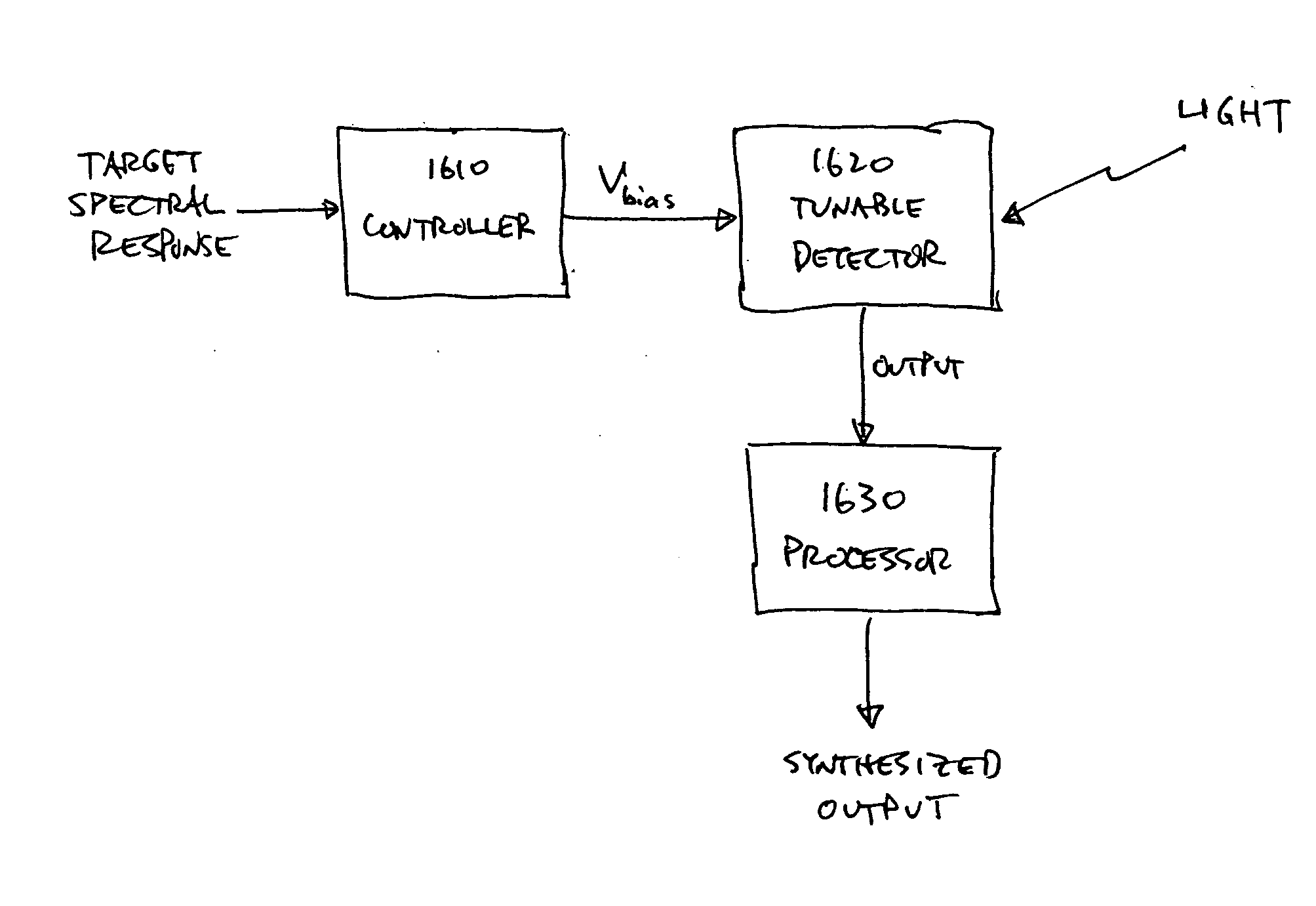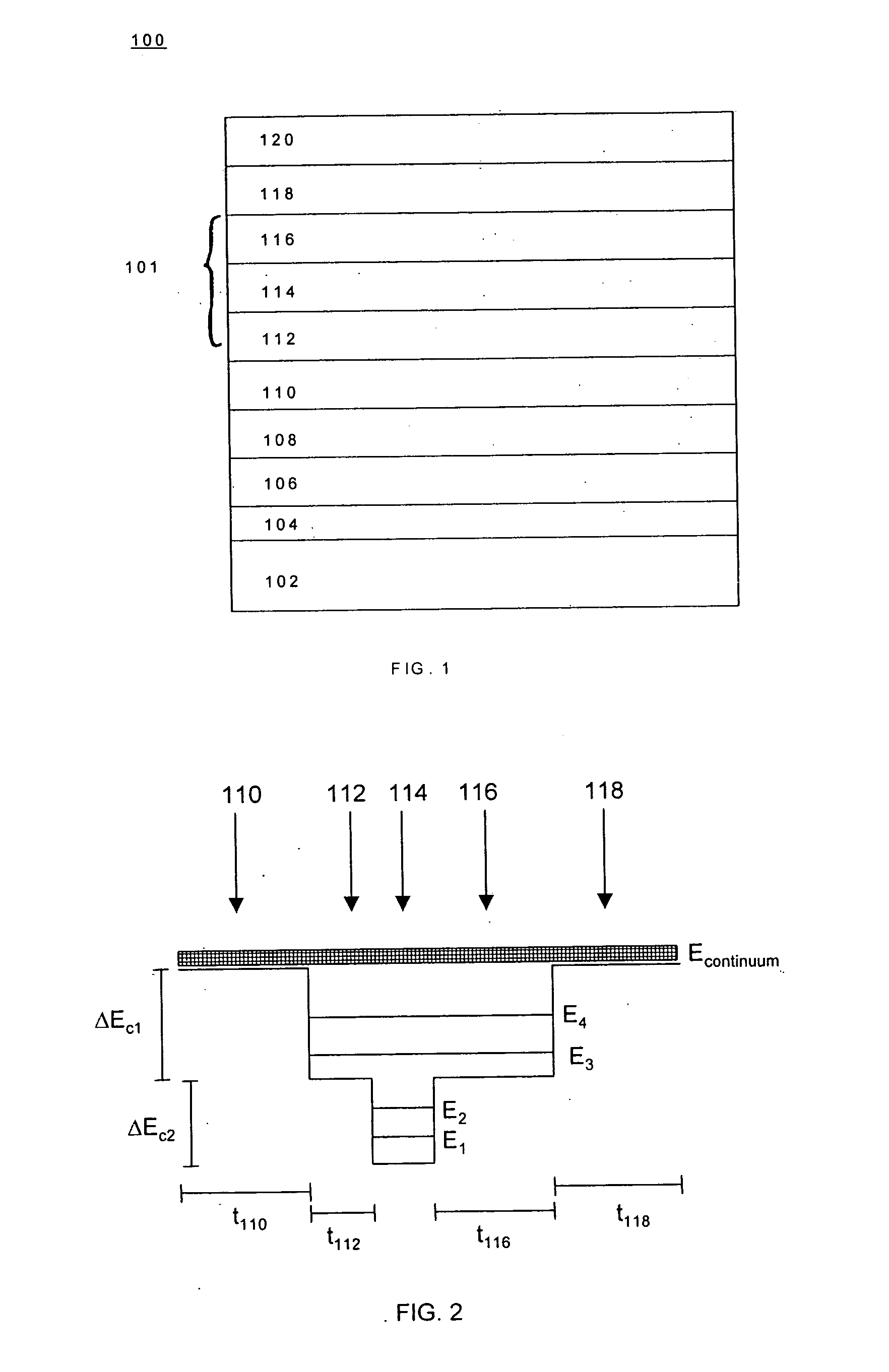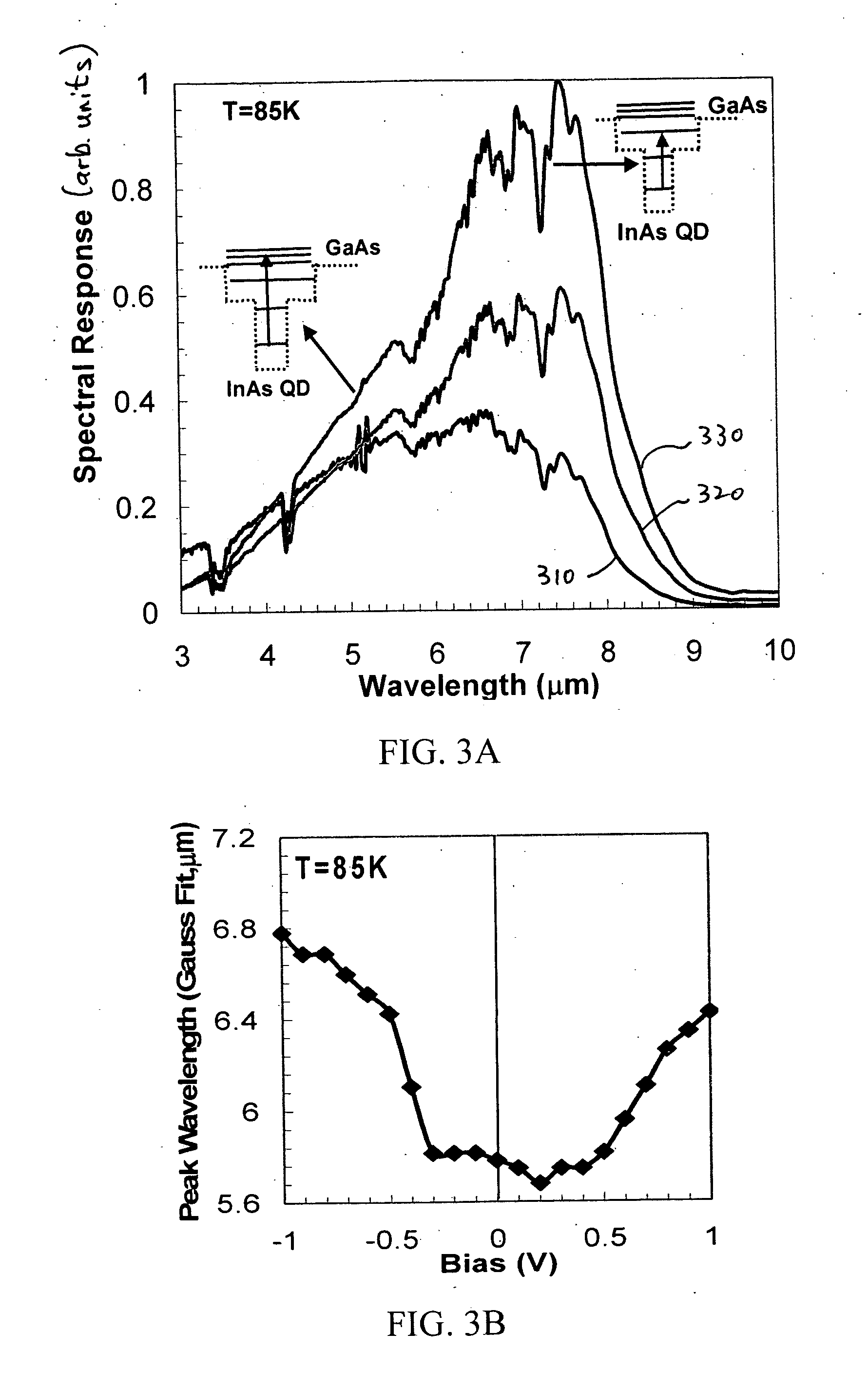Detector with tunable spectral response
- Summary
- Abstract
- Description
- Claims
- Application Information
AI Technical Summary
Benefits of technology
Problems solved by technology
Method used
Image
Examples
Embodiment Construction
[0037] Turning now to FIG. 1, a cross-sectional view of an example DWELL structure 100 is illustrated. DWELL structure 100 includes multiple layers 104-120 fabricated on a substrate 102. The layers include a buffer region 104, an etch-stop region 106, a conductive region 108, a barrier region 110, an absorbing region 101, another barrier region 118 and another conducting region 120. In this example, the absorbing region 101 includes well regions 112 and 116 and quantum dot region 114 located between the two well regions 112 and 116.
[0038]FIG. 1 will be discussed in the context of a particular embodiment and is simplified for ease of discussion. Thus, it is not intended to be limiting. For example, other embodiments may use some, all or none of the specific regions shown in FIG. 1. The basic structure may be used with certain regions omitted and / or additional regions inserted. The regions are shown in FIG. 1 without lateral shape when, in fact, the lateral shapes of the regions may ...
PUM
 Login to View More
Login to View More Abstract
Description
Claims
Application Information
 Login to View More
Login to View More - R&D
- Intellectual Property
- Life Sciences
- Materials
- Tech Scout
- Unparalleled Data Quality
- Higher Quality Content
- 60% Fewer Hallucinations
Browse by: Latest US Patents, China's latest patents, Technical Efficacy Thesaurus, Application Domain, Technology Topic, Popular Technical Reports.
© 2025 PatSnap. All rights reserved.Legal|Privacy policy|Modern Slavery Act Transparency Statement|Sitemap|About US| Contact US: help@patsnap.com



